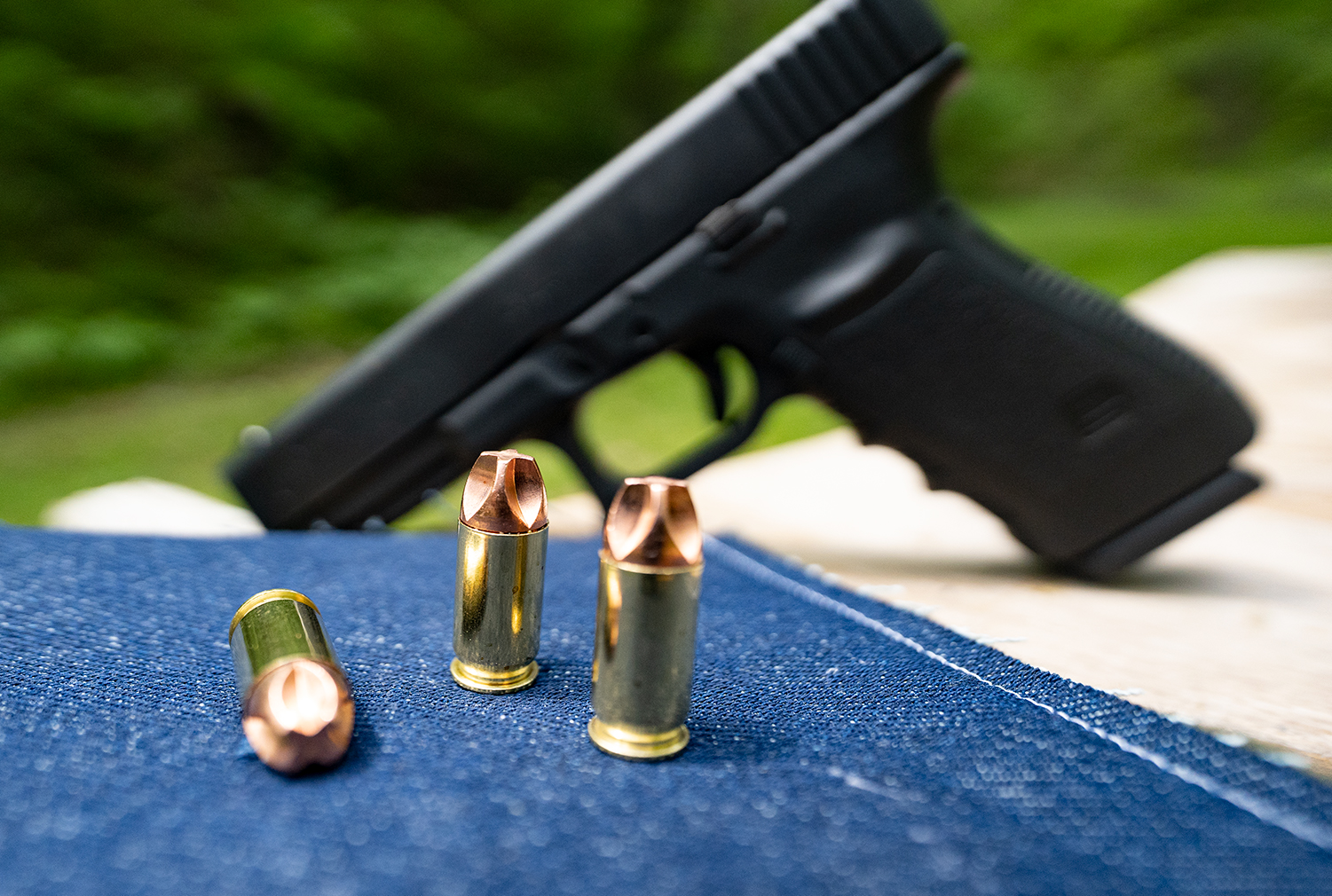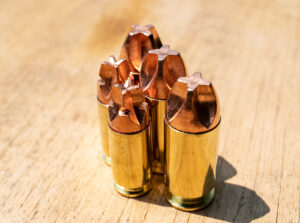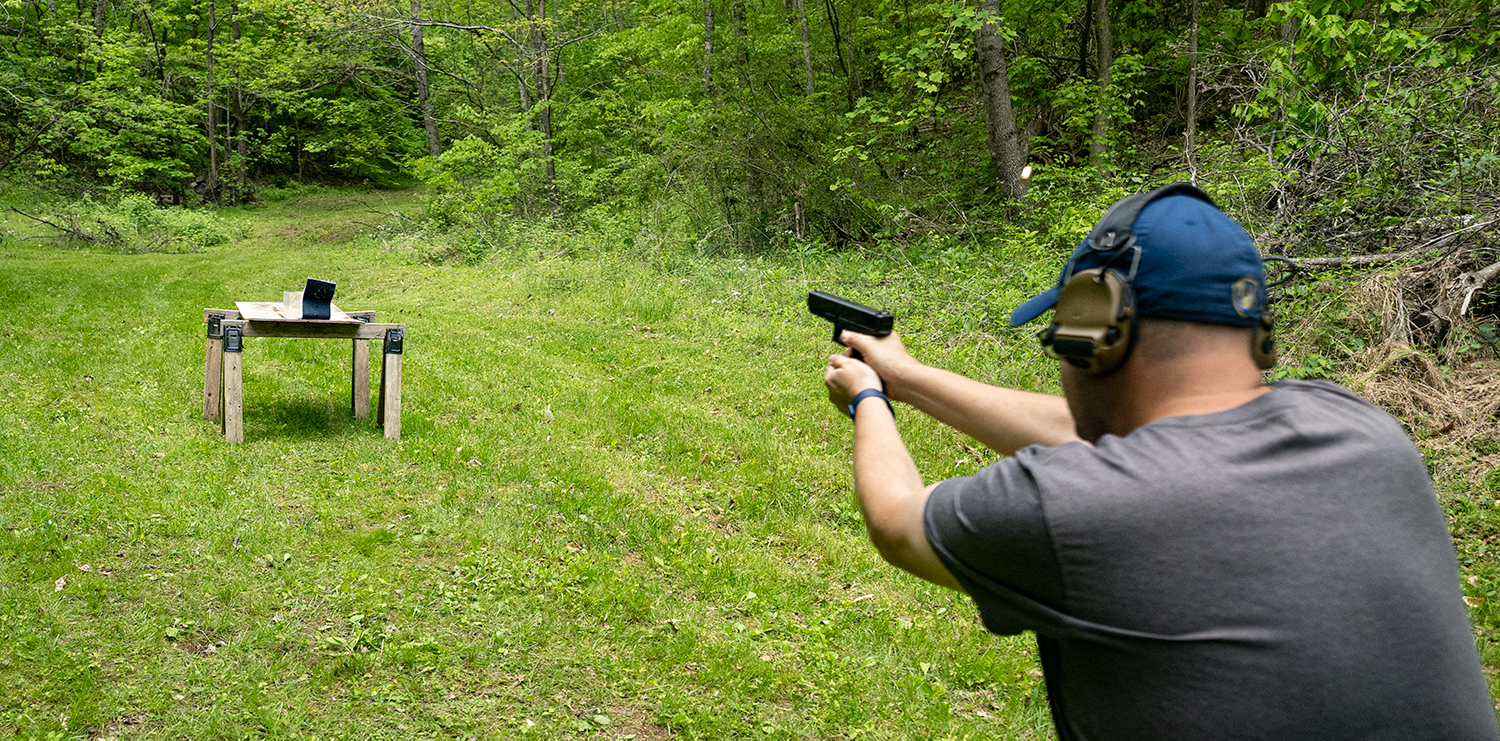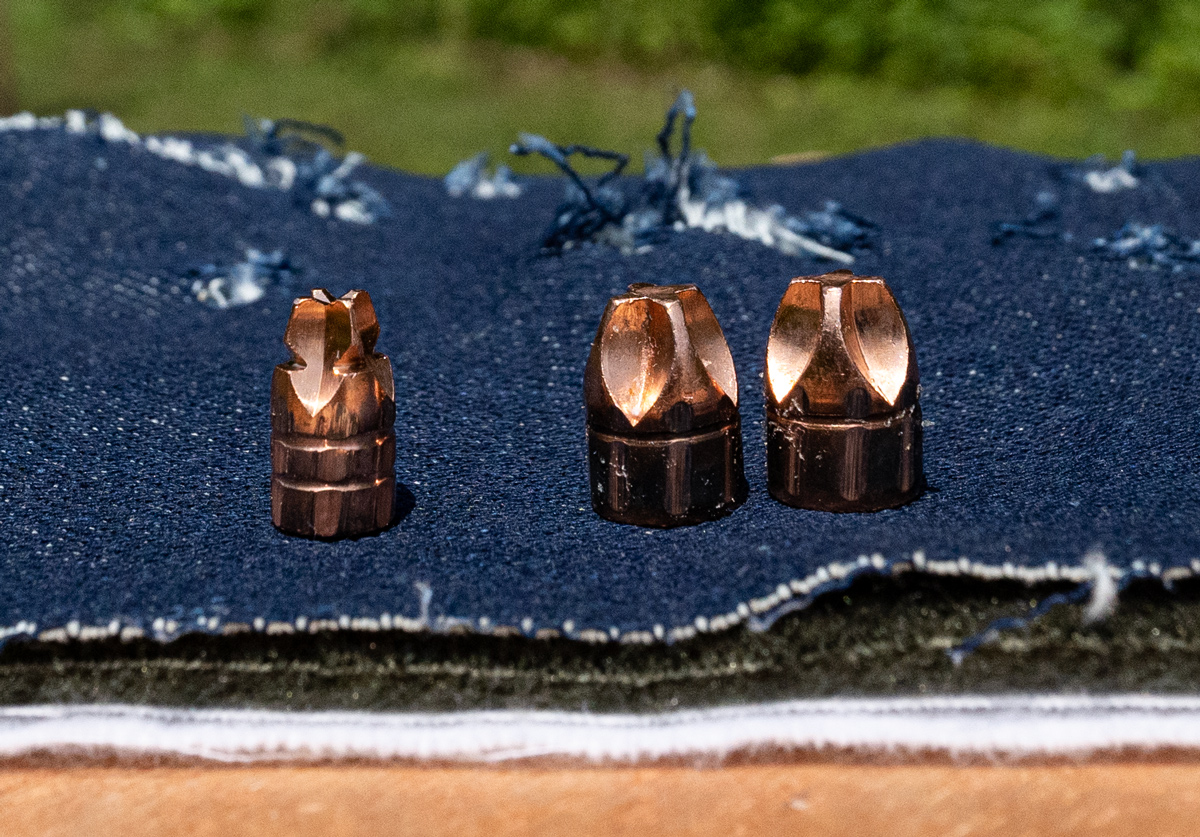The hollow point is the most popular design for a handgun self-defense bullet. It operates on a simple principle: When the bullet presses against soft tissue, the pressure which builds inside its nose cavity forces it to open up. This lets the hollow point gouge a wide wound channel into its target as it expands. It also lets the bullet exert more of its energy outward instead of just forward, as well as reduces the chance of over-penetration which could jeopardize innocent bystanders.
Buy our 9mm Honey Badger Ammo Here.
Find the 135 Grain 45 ACP Honey Badger Here.
But the hollow point is not the only game in town. The HoneyBadger, which is a self-defense bullet created for Black Hills Ammunition by Lehigh Defense, is becoming increasingly popular – and not just because of its catchy name.
How Does the Honey Badger Work?

As effective as it can be, the hollow point design has a major shortcoming: its nose cavity. If the bullet strikes its target with too little velocity, it will not have adequate energy to effect terminal expansion. Furthermore, if the hollow point must penetrate a barrier like fabric or drywall before connecting with its target, its nose cavity could become clogged with debris that will inhibit its ability to expand.
The HoneyBadger does not have a nose cavity. Instead its shape resembles that of a Phillips head drill bit, with four symmetrical ridges comprising its nose profile. In short, the HoneyBadger cannot clog with debris. Its knife-like ridges also help it cut through barriers and soft tissue alike, which is why even a relatively weak 380 ACP HoneyBadger load can reliably penetrate soft tissue to a depth of about 13”.
So how does the HoneyBadger work if it is incapable of terminal expansion? Well, it satisfies the FBI test protocol for penetration depth and wound cavity diameter by taking an altogether different approach to terminal ballistics. The magic lies in the grooves between its ridges.
Honey Badger Ammo’s Ridges

When the HoneyBadger penetrates soft tissue, its four lateral grooves actively engage with any material they come into contact with. The grooves immediately pressurize soft tissue, which they subsequently jet outward in a devastating demonstration of what physicists call the Venturi effect.
Think of it this way: Suppose you have a funnel and a tub of water. You push the funnel’s wide part against the water, which causes water to spout upward from its narrow end. The water will shoot out faster than you are pushing the funnel downward!
This is fundamentally what the HoneyBadger’s grooves are doing to soft tissues as the bullet penetrates them, and they are directing the soft tissues outward in a lateral direction. That is how the HoneyBadger creates a far wider permanent wound channel than its original diameter alone could account for.
What Is Honeybadger Ammo Made Of?
The HoneyBadger is a monolithic bullet. It is machined from solid copper, which gives it several performance advantages.
The most important among these is weight retention. A self-defense bullet would ideally shed none of its weight as it penetrates barriers, as doing so will decrease its momentum and accordingly reduce the depth it can penetrate to. A traditional jacketed hollow point bullet may exhibit core/jacket separation as it penetrates a barrier or soft tissue, which impacts how deeply it can reach.
The HoneyBadger lacks a core and jacket which could have separated from one another. Copper is also far more resilient than lead, so it consistently retains more than 99 percent of its overall weight even after having penetrated very tough barriers.
The all-copper HoneyBadger is incapable of depositing lead residue within a handgun’s barrel. This preserves the firearm’s accuracy. Furthermore, the HoneyBadger’s lack of a nose cavity means its nose profile is a little more conducive to smooth feeding in a semi-automatic firearm. Better accuracy and fewer failures to feed are both welcome benefits during a self-defense scenario.
Here is something to keep in mind with solid copper bullets: They tend to weigh less than lead ones. A lightweight HoneyBadger bullet boasts a higher muzzle velocity for this reason, as that ensures enough chamber pressure to cycle a semi-automatic as well as sufficient energy for self-defense applications.
Testing Honey Badger Ammo

Because of that high velocity and single piece bullet, Honey Badger Ammo doesn’t perform like “normal” self-defense rounds. For instance, Federal makes their HST ammo to fit snugly within the Federal Bureau of Investigation’s protocol of 12 – 18″ of penetration through a fabric barrier into ballistic gelatin.
In the Honey Badger’s case, that penetration goes out that window; it’s designed to tear right through the target.
To demonstrate this, we fired a few rounds into Clear Ballistics gelatin at our local range. You can see in the results below.
Testing HoneyBadger 9mm

The 9mm performed more closely to what the FBI recommends its agents use. However, if you’re looking for expansion from your bullets that you’d get from a more traditional pistol self-defense round, you won’t see expansion from the HoneyBadger line of ammo.
Testing 45 ACP HoneyBadger
The 45 ACP Honey Badger had no issues tearing through the fabric and it went right through the 18″ gel block too.
So, we added a second block.

It seems unlikely the FBI will be using Honey Badger anytime soon. That doesn’t mean it’s not effective. However, if you select it for your carry firearm, you need to know the risk of over-penetrating your target is fairly high with these loads — especially the 45 ACP. That could put bystanders at risk and potentially even open you up to a lawsuit. Of course, many shooters are willing to make this trade-off as they want plenty of power to bring down a threat. That’s one of the reasons we highly recommend HoneyBadger to shooters looking for the most powerful 9mm ammo out there.
As we’ve mentioned, HoneyBadger bullets don’t expand and, quite frankly, they aren’t designed to.

Why Call It HoneyBadger?
The honey badger is a carnivorous mustelid that lives throughout Africa and Asia. Although it stands less than one foot high at the shoulder, the honey badger is renowned for its aggression, tenacity and durability.
The honey badger became “internet famous” in 2011 with the release of the YouTube video entitled The Crazy Nasty*** Honey Badger. It is still hilarious over ten years later. (Though, we advice you not to click that link if you don’t want to hear foul language or watch the honey badger tear its prey to shreds with its teeth!)
Who Makes HoneyBadger Ammunition?
Black Hills Ammunition of Rapid City, South Dakota exclusively loads the HoneyBadger line of ammo. Jeff Hoffman founded the company 1981. During Hoffman’s 37 year service as a police officer, he took especial interest in his ammunition and its quality. His attention to detail has served Black Hills well, as today they supply ammo to all branches of the U.S. Armed Forces as well as over 30 firearm manufacturers across the world.
The Takeaway
The HoneyBadger doesn’t rely on terminal expansion to create a wide, deep and debilitating wound channel. Instead the bullet pressurizes soft tissues and jets them outward, thus creating a wide diameter permanent wound cavity. The resilient solid copper projectile reliably penetrates barriers, and it is available loaded in a variety of handgun and lever-action cartridges by Black Hills including 9mm, 40 S&W and 45 ACP.






Do you ship to Arizona?
Yep, we do Randy!